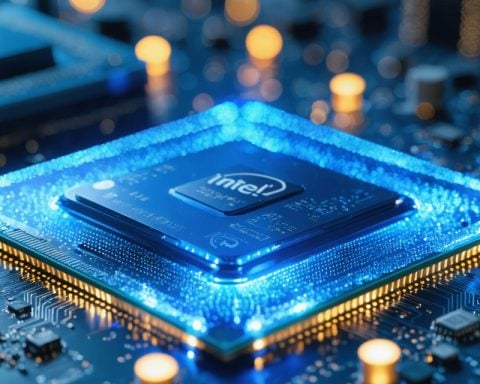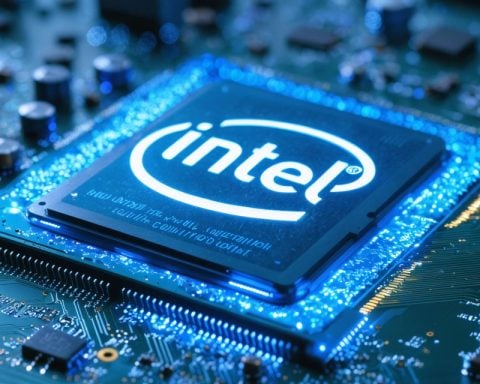A groundbreaking procedure carried out by Elon Musk’s Neuralink has allowed a quadriplegic individual named “Alex” to regain control of his limbs and play video games. The successful surgery, which involved the installation of the Link implant at the Barrow Neurological Institute in Arizona, marks a significant milestone in the field of brain technology.
The Link implant, designed specifically for individuals with quadriplegia, aims to enhance digital device control and enable the restoration of limb functionality. Alex, who had previously lost control of his limbs due to a spinal injury, can now control his character in the video game Counter-Strike 2 using the specialized mouth-operated Quadstick joystick. What’s truly remarkable is that Alex can aim his weapons purely through thought, thanks to the capabilities of the Link implant.
In addition to gaming, Alex has also been exploring other creative applications of the implant. He has learned to use CAD software to design 3D objects and even designed and 3D-printed a custom mount for the Link’s charger. This level of engagement and achievement showcases the immense potential of the Link implant to enable users to perform complex tasks and regain a sense of normalcy.
Neuralink has made significant improvements following technical issues encountered during the surgery of their first patient, Noland Arbaugh. The company has addressed problems related to the retraction of thread-based electrodes wired into the brain. For Alex, modifications have been implemented to prevent similar issues, including reducing the gap between the implant and the brain’s surface and minimizing brain motion during surgery. These enhancements have ensured the successful operation and functionality of Alex’s implant.
Looking ahead, Neuralink plans to further enhance the capabilities of the implant, with the goal of enabling full mouse and video game functionality. They also aim to develop advancements that would allow users to interact with the physical world through robotic arms or powered wheelchairs. With these future developments, Neuralink is pushing the boundaries of brain technology to improve the lives of individuals with disabilities.
Some additional facts that are relevant to the topic of brain implants and quadriplegia include:
1. The Link implant developed by Neuralink is a wireless device that connects to the brain and assists users in controlling digital devices, such as computers or smartphones, using their thoughts.
2. Neuralink’s goal is not limited to enabling quadriplegic individuals to play video games or control digital devices. The company aims to develop brain implants that can help treat various neurological conditions, including paralysis, Alzheimer’s disease, and depression.
3. Neuralink’s technology involves placing tiny electrodes in the brain that can record and stimulate neural activity. This allows the implant to decode the user’s intentions and send signals to external devices.
4. The installation of the Link implant requires a surgical procedure in which the electrodes are carefully placed in specific areas of the brain. This procedure needs to be done with precision to ensure both safety and efficacy.
5. The development of brain implants like the Link implant raises ethical and privacy concerns. The ability to read and manipulate individuals’ thoughts and brain activity raises questions about consent, privacy, and potential misuse of the technology.
6. An important question associated with this topic is how long-lasting and durable the effects of the brain implant will be. It is currently unclear how long the neural connections and functionality restored by the implant will last, and if any maintenance or further interventions will be required in the future.
Key challenges or controversies associated with brain implants and quadriplegia include:
1. The high cost of brain implants and related procedures may limit accessibility for individuals with limited financial resources or who do not have adequate insurance coverage.
2. There may be potential risks or side effects associated with brain surgery and the use of implants, such as infections, complications, or unintended consequences of the technology.
3. The technology is still in its early stages, and further research and testing are needed to fully understand and optimize the benefits, risks, and limitations of brain implants for individuals with quadriplegia.
Advantages of brain implants for quadriplegic individuals:
1. Restoration of limb functionality and increased independence: Brain implants can enable individuals with quadriplegia to regain control over their limbs and perform tasks they were previously unable to do, which can enhance their quality of life and independence.
2. Improved communication and interaction: Brain implants can potentially improve communication skills and allow individuals to interact with their environment and technology using only their thoughts.
Disadvantages of brain implants for quadriplegic individuals:
1. Invasive surgical procedures: The installation of brain implants requires a complex surgical procedure that carries risks and potential complications.
2. Limited accessibility: The high cost of the technology and associated procedures may limit access for individuals with limited financial means.
3. Ethical and privacy concerns: The ability to access and manipulate an individual’s brain activity raises ethical and privacy concerns, which need to be carefully addressed.
Suggested related link:
Neuralink


















